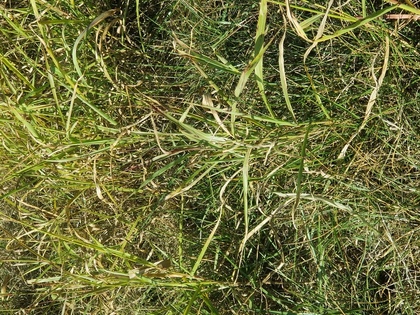
The Most Popular Horse Breeds Of 2019
Equestrian Advice & Guides General Equestrian
Build your business profile for FREE and expose your services to thousands of potential clients!
Create my profile now!
Facts About Johnson Grass and Your Horse
Johnson grass ( Sorghum Halepense) is a drought tolerant grass that can take over a pasture that is not mowed and maintained properly! While other grasses die out in drought it will spread like wildfire. Horses that are allowed to graze this grass or that consume it in hay that was not cut st the appropriate time can become very sick or die!! There are four major disease categories for Johnson grass toxicity.
Cattle also can suffer from nitrate intoxication and acute cyanide poisoning so you need to be vigilant in control of Johnson grass in their grazing & hay consumption. Clinical signs in horses can appear in as little as two weeks in horses grazing on it. Hay that has been produced in appropriately can cause ataxia (incoordination) trouble walking, backing up, dribbling of urine, then progressing to flaccid (limp) paralysis. Mares will open and close the vulva like they are in heat till their hind quarters and tail are paralyzed. If they are bred the mare can abort the fetus or have major malformation of the embryo. Make horses have an extended limp penis with dribbling and ataxia.
The progression of the poisoning from these types of grass is not known. The spinal cord is damaged so control of the bladder and hindquarters is affected. Johnson grass has sporadic effects on horses, some seem to have immunity to it. The amount of hay or grass that must be consumed to see clinical toxicity is unknown, ranging from one bite to grazing for a month. Johnson grass loves warm temperatures, so its sprouts and rhizomes start growing when soil temperatures reach 60°F. Mid- spring is when it starts growing, and rhizomes grow faster than seeds. It can flourish in soil PHs of 5-7.5 so it can tolerate many soil types, but it’s not found of red clay soil. Once it flowers it becomes unpalatable, beware of a white powder on the leaves, it is not safe to harvest at this point. Nitrates and prussic acid are high at this point, so the poisoning risk is high. If you have a long rainy period followed by drought beware of the increased nitrates. The weather is our enemy with Johnson grass, because frost can also effect the nitrate and prussic acid content. You need to test your hay and grazing field before allowing animals to consume it.
There is no treatment for Johnson grass, Sorghum toxicity! You can only remove it from their diet. Some horses can improve while others suffer permanent damage. The best way to control Johnson grass, Sorghum in your pastures is to mow it, and to have specific control over when the hay is safe to harvest it. You can contact your local extension office for recommendations in your area for controlling Johnson grass. There can be mechanical plowing to five inches or use of herbicide(Benefi , Sulphosulfuron, Roundup Power Maxx) to destroy it. This grass has been around since 1800, so it has learned to change and adapt to the changing soil and environment.

